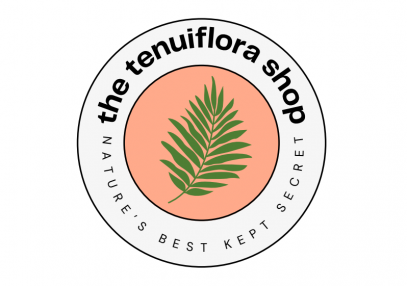Mimosa Hostilis Bark Concentrate for Dyeing: A Complete Guide
Natural dyes have been making a big comeback, and for good reason — they’re sustainable, eco-friendly, and capable of producing stunning colors that synthetic dyes simply can’t replicate. Among the most powerful and unique natural dyes available, mimosa hostilis bark stands out as a favorite for artisans, textile artists, and DIY makers.
When used in the right way, mimosa hostilis bark concentrate for dyeing can produce rich, deep colors, ranging from earthy pinks to deep purples and browns, depending on your method. This guide will walk you through the history of mimosa hostilis as a dye source, how to prepare a concentrate for your projects, and the best ways to get consistent results.
A Brief History of Mimosa Hostilis as a Dye
Mimosa hostilis, also known as Mimosa tenuiflora or “Jurema,” is native to regions of Mexico, Central America, and Brazil. Its bark has been valued for centuries, not only for its natural healing properties but also for its deep, pigment-rich color. Historically, communities have used the bark to dye textiles, leather, and ceremonial garments.
Unlike many plant-based dyes that require complex processing, mimosa hostilis bark naturally contains high concentrations of tannins and pigments, making it easy to turn into a dye. These same tannins also help bind the color to fibers, creating longer-lasting shades without the need for excessive synthetic fixatives.
Why Use a Bark Concentrate Instead of Direct Dyeing?
While you can dye fabric directly by boiling bark or powder in water, creating a mimosa hostilis bark concentrate for dyeing offers several benefits:
- Stronger Color Pigment: A concentrate allows you to store a potent dye liquid that can be diluted for different shades.
- Consistency: Once you’ve made a batch, you can reproduce results more reliably.
- Efficiency: Preparing a concentrate in advance saves time during the actual dyeing process.
- Storage: Concentrate can be kept for future projects, reducing waste.
Artisans who regularly use natural dyes often find that having concentrates ready to go is a game-changer for workflow and creativity.

How to Make Mimosa Hostilis Bark Concentrate for Dyeing
Here’s a simple step-by-step process to create your own dye concentrate at home:
You’ll Need:
- Mimosa hostilis bark powder (find mimosa hostilis for sale from trusted, ethical sources)
- Large stainless steel or enamel pot (avoid aluminum, as it can react with tannins)
- Fine mesh strainer or cheesecloth
- Water
- Glass jars or bottles for storage
Step-by-Step Instructions:
- Measure Your Bark Powder
For a strong concentrate, use about 200–250g of mimosa hostilis bark powder per liter of water. - Simmer the Bark
Add the powder to your pot with water and bring to a low simmer. Avoid boiling too aggressively, as it can break down pigment. - Stir and Reduce
Stir occasionally and let it simmer for 1–2 hours, allowing the liquid to reduce and thicken slightly. - Strain the Liquid
Use cheesecloth or a fine mesh strainer to separate the liquid concentrate from the remaining plant material. - Store Properly
Pour the liquid into sterilized glass jars or bottles. Store in a cool, dark place or refrigerate for longer shelf life. - Use When Needed
Dilute the concentrate with water depending on your desired color intensity.
Tips for Getting the Best Color
- Pre-Mordanting Fabric
Although mimosa hostilis contains natural tannins, mordanting your fabric before dyeing helps lock in color. Alum and iron are popular mordants for plant-based dyes. - pH Adjustments
Slightly acidic or alkaline solutions can shift the final color. For example, adding a splash of vinegar can deepen certain tones. - Heat Control
Gentle heat works better for longer-lasting pigment. Overheating can dull colors. - Fiber Choice
Natural fibers like cotton, silk, and wool absorb dye far better than synthetics.
Inspiration: Pairing Mimosa Hostilis with Other Natural Dyes
One of the most exciting things about working with mimosa hostilis bark concentrate for dyeing is how well it pairs with other botanical dyes. You can create multi-tonal, layered effects by combining it with natural dyes like:
- Madder Root – For warm reds and oranges
- Indigo – For deep blues and purples
- Walnut Hulls – For rich browns and neutrals
- Onion Skins – For golden and copper tones
If you’re interested in exploring more natural dye combinations, check out resources like this beginner’s guide to plant-based dyeing for additional inspiration.
Sustainability and Ethical Sourcing
With natural dyes becoming more popular, it’s essential to source your materials responsibly. Look for suppliers who use sustainable harvesting practices to protect wild mimosa hostilis trees. At Tenuiflora Shop, we ensure our bark is ethically sourced, lab-tested, and packaged with eco-conscious materials.
Choosing responsibly sourced materials doesn’t just help the environment — it also ensures you’re working with high-quality bark that delivers consistent results.
Common Mistakes to Avoid When Making Bark Concentrate
- Skipping Filtration: Leaving bark particles in your concentrate can lead to uneven dyeing.
- Improper Storage: Always store in clean, airtight containers to avoid spoilage.
- Not Testing First: Do a small test swatch before committing to a full garment.
- Using Unmordanted Fabric: This can result in dull colors that fade quickly.
Final Thoughts
Working with mimosa hostilis bark concentrate for dyeing opens up a world of creative possibilities for textile artists, natural crafters, and DIY enthusiasts. Whether you’re looking for bold, rich tones or soft, subtle hues, this versatile botanical delivers stunning, lasting results.
If you’re ready to start your next natural dye project, source your materials from trusted suppliers, experiment with different mordants and fiber types, and don’t be afraid to layer colors for unique effects.
And remember — great dyeing starts with great materials. Explore mimosa hostilis for sale today and get started on your next masterpiece.
